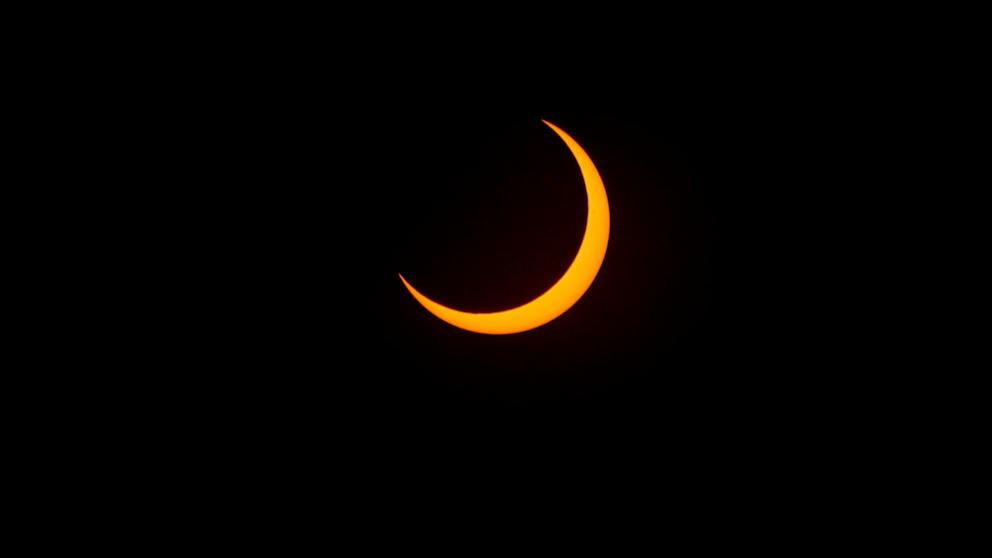


"Eclipse Across America" will air live Monday, April 8, beginning at 2 p.m. ET on ABC, ABC News Live, National Geographic Channel, Nat Geo WILD, Disney+ and Hulu as well as network social media platforms.
Excitement is mounting for one of nature's most unique spectacles, the total solar eclipse, set to cast a historic shadow across a path through the United States on April 8, 2024.
The track of the moon's shadow across Earth's surface is called the path of totality, and to witness the April 8 total solar eclipse in totality, viewers must be within the 115-mile-wide path.
MORE: Total solar eclipse April 8, 2024 facts: Path, time and the best places to viewBut for anyone outside the path, eclipse day will still offer a celestial spectacle worth getting eclipse glasses for.
"The entire contiguous United States, Hawaii and Alaska will see at least a partial eclipse," Michael Zeiler, expert solar eclipse cartographer and founder of Greatamericaneclipse.com, told ABC News. "The closer you are to the path of totality, of course, the deeper the eclipse will be."
To discover when to see the total solar eclipse or the partial eclipse in locations across the U.S. outside of the path, check out NASA's Eclipse Explorer tool.
A total solar eclipse occurs when the moon passes between the sun and the Earth and, for a short time, completely blocks the face of the sun, according to NASA.
A partial solar eclipse happens when the moon passes between the sun and Earth, but the celestial bodies are not completely aligned, according to the agency.
MORE: Weather forecast for April 8 total solar eclipse along path of totalityDuring a partial solar eclipse, the sun appears to be a crescent shape, according to NASA.
"The difference between a total and a partial solar eclipse is literally night and day," Zeiler said, adding that unless you are within the path of totality, the chance to see the sun's corona disappears.
"Even if you stand just a little bit outside the path of totality, even if you are in the zone of 99%, the sunlight is still 10,000 times brighter than the Sun's corona," Zeiler said. "So it's impossible to see the corona unless you are truly inside the path of totality."
MORE: Why April's total solar eclipse will be a historic event in the USDespite missing the total solar eclipse, Zeiler encourages all Americans to "step outside" on eclipse day.
"Enjoy the spectacle of the partial eclipse," Zeiler said. "Because that's still very interesting and brings you closer to the movements of the sun and moon — seeing the solar system in motion."
Using Los Angeles, California, as an example, during the maximum of the partial solar eclipse, at 11:12 a.m., local time, 58% of the sun will be occulted by the moon.
"So it'll be noticeably dimmer than normal, but not exceptionally," Zeiler said, adding, "In fact, you might not even realize that an eclipse is happening unless you are paying attention to it."
Below is a list of some American cities where the April 8 partial solar eclipse will be most visible — pending weather forecasts — the magnitude of the eclipse in those locations and what time, locally, the partial eclipse view will be at maximum, according to Space.com.
The magnitude is the fraction of the sun's diameter covered by the moon during the partial eclipse.
For those outside of the path of totality, NASA will be streaming the view of the total solar eclipse live on April 8, 2024.
"Tune in for live views from across the path, expert commentary, live demos, and more," according to the agency's official broadcast.